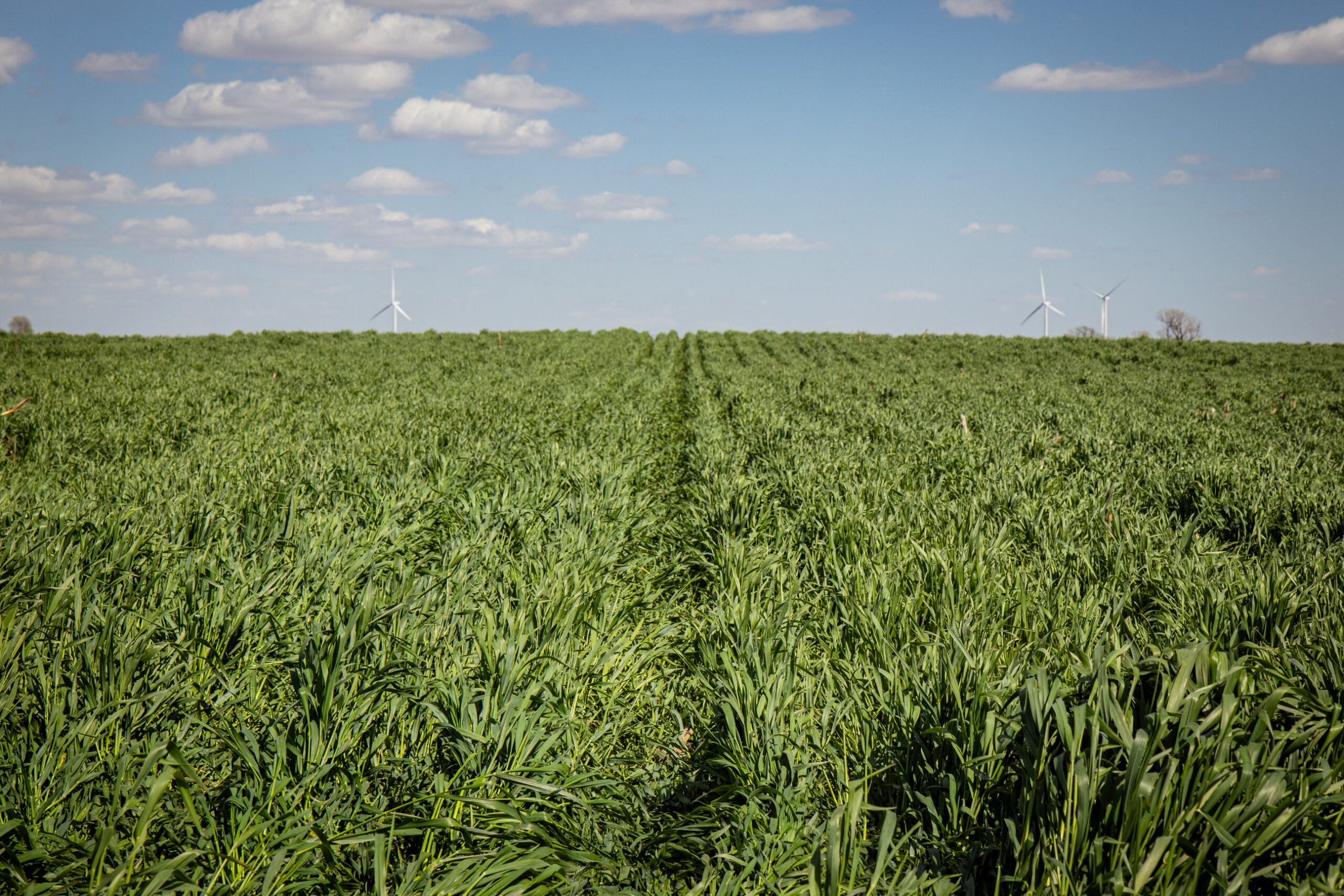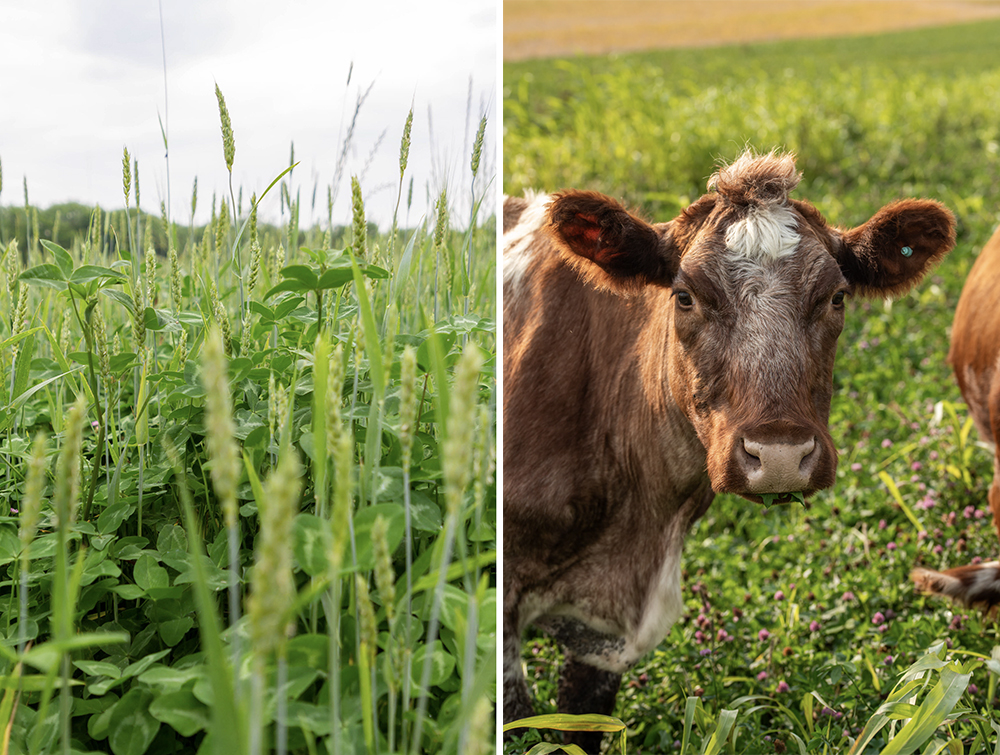
At AgSpire, we work alongside farmers and ranchers to identify practices that strengthen their operation’s efficiency, productivity, and longevity. One of the most effective we see in action on the ground is cover cropping.
When planned carefully, cover crops do more than fill time between cash crops. They actively manage nutrients—capturing, cycling, and returning them to the soil—so fertilizer dollars stretch further and soil health improves year after year.
In this article, we share how link between cover crops and soil nutrients can benefit your land, livestock, and business.

A Benefit to the Land
In the upper Great Plains where a number of our programs are active, declining soil productivity is a major challenge. Cover crops help reverse that trend by rebuilding soil health and restoring balance.
- Fixing Nitrogen: Legumes such as common vetch and Balansa clover capture nitrogen from the air and return it to the soil, reducing the need for purchased N.
- Recovering Nutrients: Deep-rooted crops like radishes and turnips pull nutrients from deeper soil layers, making them available to the next cash crop instead of losing them to leaching.
- Holding Nutrients in Place: Keeping fields covered stabilizes soil and nutrients, supporting microbial activity year-round and preventing loss from bare ground.
Each of these actions improves nutrient cycling and builds healthier soil, which can reduce the need for additional fertilizer inputs.
Forage Benefits for Livestock
In our programs, most cover crops are grazed or hayed. Producers select mixes that offer strong forage value and good nutrition.
Cattle trampling biomass into the ground and returning nutrients through manure accelerates the natural fertilizer cycle. Instead of nutrients being lost, they are recycled back into the soil, cutting the need for additional inputs while improving forage availability for the herd.
This makes cover crops a dual-purpose tool. They support both soil and livestock health while strengthening the overall crop rotation system.
A Smarter Business Decision
Cover crops are more than a soil health practice; they’re a smart business decision. By improving nutrient availability and reducing fertilizer dependence, cover crops directly support the bottom line:
-
Lower reliance on synthetic fertilizers and herbicides.
-
Reduced feed costs when used as forage.
-
Extended grazing season and fewer purchased hay bales.
Over time, a good crop rotation strategy with cover crops can protect your bottom line and increase operational resilience.
Ready to put cover crops to work?
If you’re curious about how a crop rotation plan with cover crops could benefit your operation, we’d love to help. Fill out the form below or call/text 605.675.7255 to get started.
Additional Links
AgSpire Advisor Austin Knight shares more about nutrient management in this short video >>> AgSpire YouTube Channel
Learn more about soil health and its benefits for your operation >>> Soil Health: A Practical Advantage for Your Farm